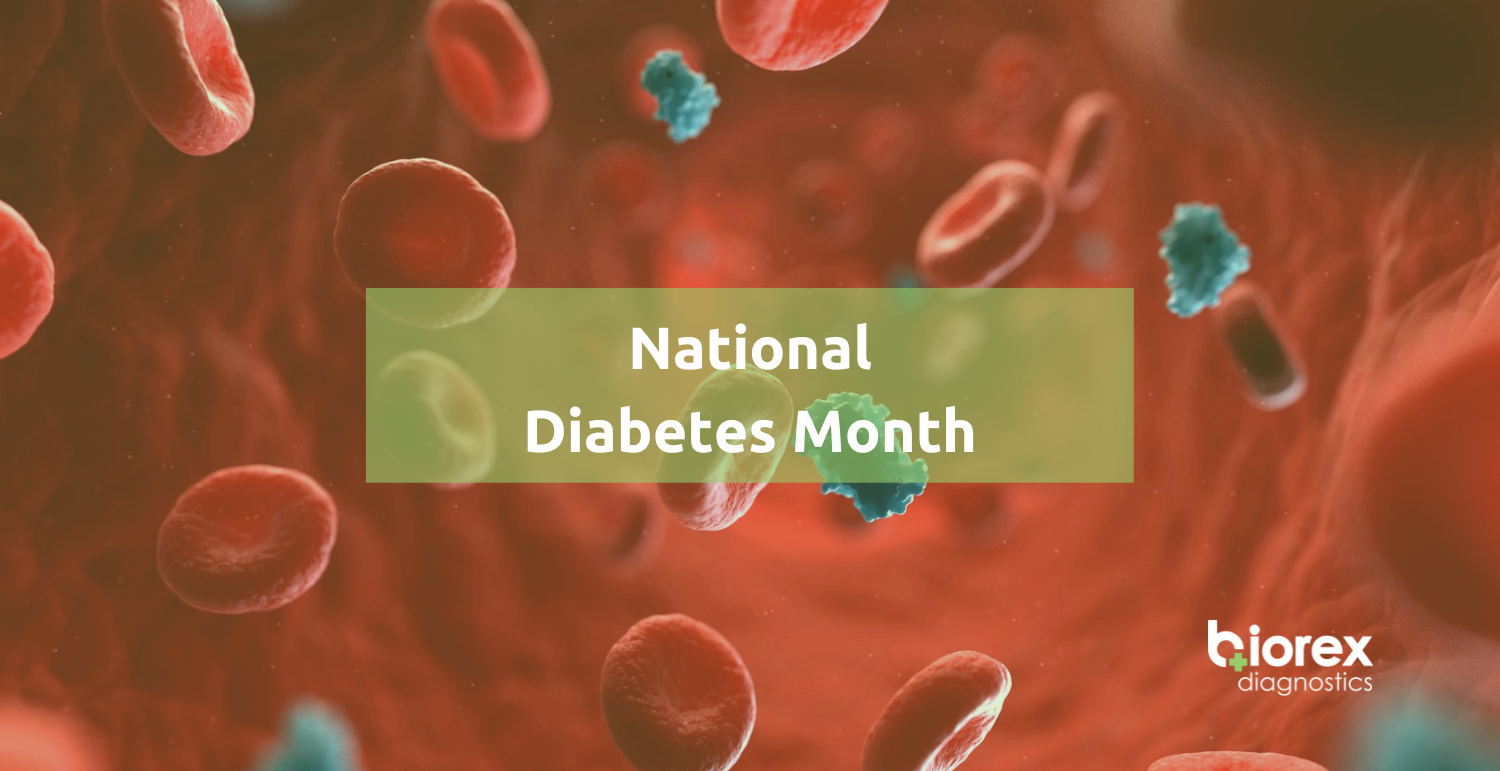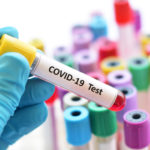
National Diabetes Month
National Diabetes Month
Diabetes is a chronic disease characterised by insulin resistance either due to the pancreas’s inability to produce enough insulin or due to the body’s inability to use the insulin it produces effectively. Insulin is the hormone that is responsible for the regulation of blood glucose 1. Approximately 537 million adults, aged 20-79 years of age, are living with diabetes and is projected to rise to 643 million by 2030 and 783 million by 2045. Moreover, 240 million (1 in 2) adults are living with diabetes but it is undiagnosed and 541 million adults are at an increased risk of developing type 2 diabetes mellitus (T2DM). Furthermore, more than 1.2 million children, aged 0-19 years of age, are living with type 1 diabetes mellitus (T1DM) and 1 in 6 live births (21 million) are affected by gestational diabetes 2.
Global Cost of Diabetes
The global economic burden from diabetes is set to almost double by 2030 to $2.5 trillion according to research undertaken by King’s College London. Even if countries meet their internationally set targets, the global economic burden from diabetes is still set to increase by 88%. Justine Davies from the Centre for Global Health who co-led the research stated: “It is imperative that actions are taken to reduce some of the risk factors for diabetes, for instance obesity and physical inactivity, to ensure costs do not rise further” 3.
Whilst urgent steps are required to mitigate the effects of diabetes, it is vital that diabetes is diagnosed and monitored to aid in preventing life-threatening secondary complications 3.
Types of Diabetes
Type 1 Diabetes Mellitus
Type 1 diabetes mellitus (T1DM) is an organ-specific autoimmune disease characterised by the destruction of pancreatic β-cells and preventing the body from producing enough insulin to adequately regulate blood glucose levels 4, 5.
Type 2 Diabetes Mellitus
Type 2 diabetes mellitus (T2DM) is a chronic condition characterised by the body’s inability to effectively use insulin. This type of diabetes is largely the result of excess body weight and physical inactivity. More than 95% of those with diabetes have T2DM. Whilst this type of diabetes was only seen in adults, it is now increasingly occurring in children 1.
Gestational Diabetes
Gestational diabetes is diabetes that occurs during pregnancy and is characterised by hyperglycaemia with blood glucose levels above normal levels but below the diagnostic values for diabetes. Women with gestational diabetes are at an increased risk of pregnancy and birthing complications. Both the woman and the baby also have an increased risk of T2DM in the future 1.
Diagnosis & Monitoring of Diabetes
At Biorex Diagnostics, we offer a few assays for the diagnosis and monitoring of diabetes.
Glucose
Strict glycaemic control is a well-established method for diabetes monitoring in both T1DM and T2DM. Several studies support that elevated plasma glucose levels are an independent and clinically significant risk factor for diabetes complications, such as cardiovascular disease in both diabetic and non-diabetic individuals 6.
HbA1c
HbA1c is a reliable biomarker for the diagnosis and prognosis of diabetes. HbA1c has the ability to reflect the cumulative glycaemic history for the preceding two to three months, providing a more reliable indicator of chronic hyperglycaemia. HbA1c levels also correlate well with the risk of long-term diabetes complications. Moreover, elevated HbA1c levels have been found to be an independent risk factor for coronary heart disease (CHD) and cerebral vascular accident (CVA) (stroke) in patients with or without diabetes. 7.
Fructosamine
When blood glucose levels are elevated over a period of time, the glucose molecules permanently bind with proteins in the blood (glycation). These proteins include albumin (the main protein in the blood), haemoglobin and other serum proteins. The combined molecules circulate in the blood for the life of the protein or red blood cell (RBC). Fructosamine or glycated proteins have a shorter lifespan compared to HbA1c and as such, reflects the cumulative glycaemic history for the proceeding two to three weeks 8. Whilst the lifespan on fructosamine is shorter than HbA1c, fructosamine testing has been identified as being the best option for patient care when HbA1c may not be reliable. Such situations include: blood loss or haemolytic anaemia, sick cell anaemia, end-stage renal disease, liver disease, HIV, or recent blood transfusions 9.
Insulin
Insulin is a hormone created by the pancreas to aid glucose in entering cells in the liver, muscle and fat for energy. The more glucose that enters the body, the more insulin the pancreas produces. However, in insulin resistance, the cells in the liver, fat and muscle don’t respond well to the insulin and is unable to easily pick up the glucose. Over time, the concentrations of glucose continue to increase, leading to prediabetes 10.
C-Peptide
C-peptide is part of proinsulin which is cleaved prior to the co-secretion with insulin from pancreatic beta cells. Whilst produce in equimolar amounts to endogenous insulin and not therapeutically administered exogenous insulin, c-peptide is excreted at a more constant rate over a longer period of time. C-peptide is a useful marker of insulin secretion 11.
Diabetes Complications – Ketoacidosis
D-3-Hydroxybutyrate
Ketosis is a metabolic process whereby the body switches from carbohydrate metabolism to fat metabolism producing ketone bodies (KB); acetoacetate, acetone and d-3-hydroxybutyrate; for energy production. Diabetic ketoacidosis (DKA) is not a metabolic process, but rather a diabetes complication whereby blood glucose and KB levels are too high as a result of an extreme lack of insulin. DKA changes the pH of the blood, making it too acidic and as such, changes how internal organs, such as the kidneys and liver function. Those with T1DM are more likely to be diagnosed with DKA as insulin isn’t produced by the body in T1DM. D-3-hydroxybutyrate is a sensitive marker for the diagnosis of ketosis, especially DKA 12.
Diabetes Complications – Metabolic Status
Diabetes is a metabolic disorder meaning that the body’s ability to release and store energy from food in impaired due to issues with insulin production 13.
NEFA
Non-esterified fatty acids (NEFA) are vital metabolites found in adipose tissue (body fat), commonly found in abdominal subcutaneous fat, and considerably less found in leg or intraabdominal adipose tissue 12. NEFA levels are proportional to body fat storage, with positive correlations between fasting NEFA levels and glucose tolerance, insulin resistance and obesity 13.
Albumin
Albumin is the most abundant circulating protein found in plasma. Albumin is synthesised by liver hepatocytes and rapidly excreted into the bloodstream. Reduce albumin concentrations is associated with an adverse metabolic profile, characterised by increased glucose concentrations, adipose tissue inflammation and adiposity, inversely correlating with T2DM risk 15, 16.
Diabetes Complications – Diabetic Nephropathy
Diabetic nephropathy (diabetic kidney disease) is a serious complication of T1DM and T2DM. Diabetic nephropathy is the result of poorly controlled diabetes over a period of time, damaging blood vessel clusters in the kidneys which are filters waste from the bloodstream. Damage to the kidneys can result in high blood pressure, which causes further damage to the kidneys due to increased pressure in the delicate filtering system of the kidneys It is estimated that one in five diabetics in the UK and one in three in the USA will require treatment for diabetic nephropathy 17, 18.
Cystatin C & Creatinine
Cystatin C (CysC) is protein produced by all nucleated cells and has been identified as a stronger marker in the diagnosis and risk stratification of chronic kidney disease (CKD). Moreover, CysC is offers a better estimation of glomerular filter rate (eGFR) in diabetic patients. As creatinine is a by-product of muscle metabolism, muscle mass can vary between age, race, sex and level of fitness and so, the serum creatinine (SCr) levels can differ between individuals with the same level of kidney function, whereas CysC levels are fairly similar 19, 20.
Microalbumin
Microalbuminuria is characterised by abnormally elevated levels of albumin in urine. Under health conditions the kidneys filter waste from the bloodstream, but hold onto healthier components, including albumin. However, when the kidneys are damaged, these healthier components leak through the kidneys and exit the body via urine. Albumin is one of the first proteins to leak the complex glomerular sieve known as the glomerular filtration barrier 21, 22, 23. Moderately increased levels of albumin to creatinine ratio (ACR) in urine is an indicator of the early phase of kidney disease development with very high values indicating a more severe form of kidney disease 24.
β2Microglobulin
Beta-2-microglobulin (β2M) is a protein locate on the surface of lymphocytes and other nucleated cells and the free molecules are detectable in the plasma as products of circulating cells. β2M is highly dependent on renal function as the kidneys are the primary source of clearance. β2M concentrations are inversely correlated with GFR and is a predictive marker of diabetic nephropathy 25.
Biorex Diagnostics Diabetes Testing Panel
At Biorex, we offer a variety of diagnostics assays for the diagnosis and monitoring of diabetes as well as the diagnosis and monitoring of diabetes complications.
| Albumin | Fructosamine |
| β2Microglobulin | Glucose |
| C-Peptide – ELISA | HbA1c |
| Creatinine | Insulin – ELISA |
| Cystatin C | Microalbumin |
| D-3-Hydroxybutyrate | NEFA |
References
- World Health Organisation (WHO). https://www.who.int/news-room/fact-sheets/detail/diabetes (accessed 12 October 2022).
- International Diabetes Federation. Diabetes Facts & Figures. https://idf.org/aboutdiabetes/what-is-diabetes/facts-figures.html (accessed 12 October 2022).
- Wighton K. Cost of diabetes hits 825 billion dollars a year, according to new study. https://www.imperial.ac.uk/news/171619/cost-diabetes-hits-825-billion-dollars/ (accessed 1 November 2022).
- Kawasaki E. Type 1 Diabetes and Autoimmunity. Clinical Pediatric Endocrinology 2014; 23(4). https://www.ncbi.nlm.nih.gov/pmc/articles/PMC4219937/ (accessed 12 October 2022).
- Watts M. Type 1 Diabetes. https://www.diabetes.co.uk/type1-diabetes.html (accessed 12 October 2022).
- Gerich JE. Clinical significance, pathogenesis, and management of postprandial hyperglycemia. Archives of International Medicine 2003; 163(11). https://pubmed.ncbi.nlm.nih.gov/12796066/ (accessed 1 November 2022).
- Sherwani SI, Khan HA, Ekhzaimy A, Masood A, Sakharkar MK. Significance of HbA1c Test in Diagnosis and Prognosis of Diabetic Patients. Biomarker Insights 2016; 11(). https://www.ncbi.nlm.nih.gov/pmc/articles/PMC4933534/ (accessed 1 November 2022).
- Lab Tests Online. https://labtestsonline.org.uk/tests/fructosamine (accessed 1 November 2022).
- Manzella d. What Is a Fructosamine Blood Test for Diabetes? https://www.verywellhealth.com/fructosamine-test-1087743 (accessed 1 November 2022).
- National Institute of Diabetes and Digestive and Kidney Diseases. Insulin Resistance & Prediabetes. https://www.niddk.nih.gov/health-information/diabetes/overview/what-is-diabetes/prediabetes-insulin-resistance#insulin (accessed 3 November 2022).
- Leighton E, Sainsbury CAR, Jones GC. A Practical Review of C-Peptide Testing in Diabetes. Diabetes Therapy 2017; 8(3). https://www.ncbi.nlm.nih.gov/pmc/articles/PMC5446389/ (accessed 3 November 2022).
- Hecht M. Ketosis vs. Ketoacidosis: What You Should Know. https://www.healthline.com/health/ketosis-vs-ketoacidosis (accessed 1 November 2022).
- Martin L. Diabetes and metabolism: What to know. https://www.medicalnewstoday.com/articles/diabetes-and-metabolism (accessed 1 November 2022).
- Il’yasova D, Wang F, D’Agostino Jr RB, Hanley A, Wagenknecht LE. Prospective association between fasting NEFA and type 2 diabetes: impact of post-load glucose. Diabetologia 2010; 53(5). https://link.springer.com/content/pdf/10.1007/s00125-010-1657-4.pdf (accessed 1 November 2022).
- Noman RN, Gupta N, Varacallo M. Physiology, Albumin. Treasure Island (FL): StatPearls Publishing; 2022.
- Chang DC, Xu X, Ferrante Jr AW, Krakoff J. Reduced plasma albumin predicts type 2 diabetes and is associated with greater adipose tissue macrophage content and activation. Diabetology & Metabolic Syndrome 2019; 7(11:14). https://pubmed.ncbi.nlm.nih.gov/30774722/ (accessed 2 November 2022).
- Diabetes UK. Diabetic nephropathy (kidney disease). https://www.diabetes.org.uk/guide-to-diabetes/complications/kidneys_nephropathy (accessed 2 November 2022).
- Mayo Clinic. Diabetic nephropathy (kidney disease). https://www.mayoclinic.org/diseases-conditions/diabetic-nephropathy/symptoms-causes/syc-20354556 (accessed 2 November 2022).
- Lieske JC. Cystatin C and Creatinine: Complementary Markers of GFR Expert John C. Lieske, MD. https://www.aacc.org/cln/articles/2016/april/cystatin-c-and-creatinine-complementary-markers-of-gfr-expert-john-c-lieske-md (accessed 2 November 2022).
- Rigalleau V, Beauvieux M-C, Le Moigne F, Lasseur C, Chauveau P et al. Cystatin C improves the diagnosis and stratification of chronic kidney disease, and the estimation of glomerular filtration rate in diabetes. Diabetes & Metabolism 2008; 34(5). https://pubmed.ncbi.nlm.nih.gov/18703370/ (accessed 2 November 2022).
- Tobe SW, McFarlane PA, Naimark DM. Microalbuminuria in diabetes mellitus. Canadian Medical Association Journal 2002; 167(5). https://www.ncbi.nlm.nih.gov/pmc/articles/PMC121969/ (accessed 2 November 2022).
- Mayo Clinic. Microalbumin test. https://www.mayoclinic.org/tests-procedures/microalbumin/about/pac-20384640 (accessed 2 November 2022).
- Singh A, Satchell SC. Microalbuminuria: causes and implications. Pediatric Nephrology 2011; 26(11). https://www.ncbi.nlm.nih.gov/pmc/articles/PMC3178015/ (accessed 2 November 2022).
- Lab Tests Online. Urine Albumin to Creatinine Ratio or ACR. https://labtestsonline.org.uk/tests/urine-albumin-creatinine-ratio-or-acr (accessed 2 November 2022).
- Hussein ZA, Abdulsattar SA, Salman IN. The usefulness of serum beta-2 microglobulin as a biomarker for evaluating renal function decline in type II diabetes mellitus. Baghdad Journal of Biochemistry and Applied Biological Sciences 2022; 3(1). https://www.bjbabs.org/index.php/bjbabs/article/view/40/88 (accessed 3 November 2022).







